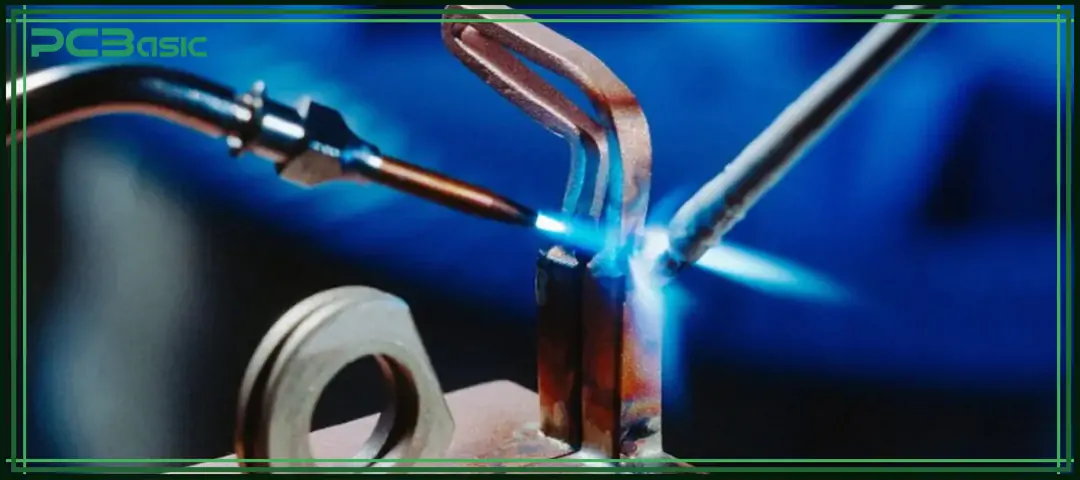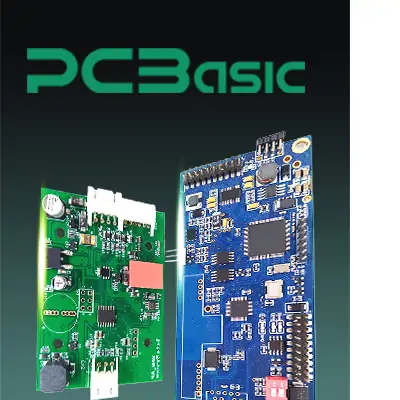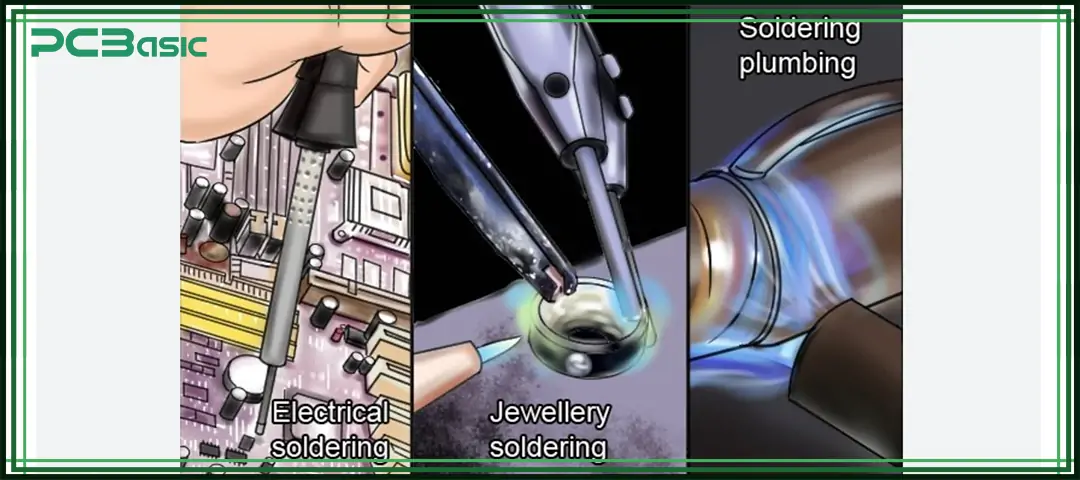

Global high-mix volume high-speed PCBA manufacturer
9:00 -18:00, Mon. - Fri. (GMT+8)
9:00 -12:00, Sat. (GMT+8)
(Except Chinese public holidays)


Global high-mix volume high-speed PCBA manufacturer
9:00 -18:00, Mon. - Fri. (GMT+8)
9:00 -12:00, Sat. (GMT+8)
(Except Chinese public holidays)
HomePage > Blog > Knowledge Base > What is Soldering? The Essential Guide for PCB Assembly
In the modern electronics industry, the stability and performance of every device rely on soldering. Whether it is the manufacturing of smartphones, the assembly of computers, or the maintenance of industrial control systems, soldering is a key process in the assembly of printed circuit boards (PCBs).
Soldering is different from traditional welding. Soldering uses a lower temperature to join two pieces of metal together with metal solder. Mastering the soldering temperature, soldering techniques and soldering process can enhance the quality and reliability of electronic products.
This guide will provide a detailed account of the basic principles, main types of soldering and common processes of soldering. The contents include methods such as hand soldering, reflow soldering and wave soldering. We will also provide a soldering temperature chart, introduce common faults and troubleshooting methods, and answer common questions about metal soldering. If you want to have a systematic understanding of soldering in the field of PCB assembly, this article is your first choice.

Soldering is a method of joining metals. When operating, a metal called solder needs to be heated and melted first to firmly bond two or more metal parts together. The melting point of the solder is lower than that of the base metal to be connected. In electronic and PCB assembly, soldering is typically used to fix components such as resistors, capacitors, and integrated circuits onto the copper pads of a PCB. This way, it can not only ensure electrical conduction but also enable components to be firmly installed on the circuit board.
Soldering and welding are two different processes. Soldering only heats and melts the solder, not the components or the traces on the PCB. This is very important for electronic products because heating can easily damage components or circuit boards. Commonly used PCB solders include tin-lead alloys (Sn-Pb) and lead-free alloys (such as tin-silver-copper).
During the soldering process, the soldering temperature and the soldering iron temperature will directly affect the quality and reliability of each solder joint.
Soldering is usually divided into several key steps:
Preparation: First, thoroughly clean the surface of the metal to be soldered to remove the oxide layer, dust and oil stains on it. Only when the surface is clean can the solder joints be strong and durable.
Applying Flux: Flux can continue to remove surface oxides and also prevent metals from oxidizing again when heated. It can also help the solder flow, making the solder joints more uniform.
Heating: Use tools such as soldering irons, reflow soldering ovens or wave soldering machines to heat the soldering area to a temperature higher than the melting point of the solder. When choosing the temperature, refer to the soldering temperature chart. It should be neither too high nor too low.
Applying Solder: Once heated properly, the solder melts rapidly and flows naturally into the joint, wetting the surfaces of all metals to be joined and forming a stable conductive connection.
Cooling: After the heat source is removed, the solder will solidify quickly, firmly fixing the solder joints on the PCB or metal surface.
During the entire soldering process, both the soldering iron temperature and the soldering temperature are crucial. If the temperature is too low, the solder will not melt fully, and the solder joints will not be reliable. If the temperature is too high, it is easy to damage the PCB or components. Correct selection and precise control of temperature are the prerequisites for obtaining high-quality solder joints.

There are three common types of soldering, all of which are widely used in PCB assembly and metal soldering:
Soft soldering is the most common soldering method in the electronics industry. Its melting point ranges from 90°C to 450°C. Soft soldering is usually used in PCB assembly. The commonly used solders are tin-lead alloys or lead-free alloys. This method has a low heating temperature and has little thermal impact on electronic components, so it is particularly suitable for temperature-sensitive electronic products.
Hard soldering (silver soldering) requires a higher soldering temperature, with a general melting point above 450°C. The solder joints created by hard soldering are stronger and are suitable for metalworking, some electronic products and jewelry making. The commonly used solders for hard soldering include silver alloy and brass alloy. Usually, high-temperature tools such as blowtorches are used for heating.
The melting point of brazing is usually above 450°C, and it commonly ranges from 600°C to 900°C. The main filler metals used for brazing are brass and silver. The solder joints of brazing are extremely strong and are suitable for connecting metal components that require high strength, such as mechanical structures and metal pipelines.
The soldering temperature required for each type of soldering is different. To solder well, you must choose the right soldering iron temperature. In actual operation, referring to the soldering temperature chart and selecting the appropriate temperature range in combination with your material and process are very important.
 About PCBasic
About PCBasic
Time is money in your projects – and PCBasic gets it. PCBasic is a PCB assembly company that delivers fast, flawless results every time. Our comprehensive PCB assembly services include expert engineering support at every step, ensuring top quality in every board. As a leading PCB assembly manufacturer, we provide a one-stop solution that streamlines your supply chain. Partner with our advanced PCB prototype factory for quick turnarounds and superior results you can trust.
During the PCB manufacturing process, there are various soldering techniques that can meet different assembly requirements. The following provides a detailed introduction to the four main soldering processes commonly used in the PCB industry, including their respective procedures, characteristics, and requirements for soldering temperature.

Hand soldering is the most fundamental and flexible PCB soldering technique, suitable for prototype, repair and small-batch production.
When operating, insert the leads of the electronic components into the PCB holes or place them on the surface pads first. Then, use a soldering iron with a temperature set within an appropriate range (generally 320°C - 370°C for leaded solder and 350°C - 400°C for lead-free solder; for specific values, please refer to the soldering temperature chart) to heat the pads and leads simultaneously. After heating to the proper position, feed the solder to allow it to flow fully and cover the solder joints. Remove the solder and then the soldering iron. After the solder joints are formed, it is necessary to check their brightness and wettability.
Hand soldering has high requirements for the operator's skills and temperature control. If the temperature is too high, it is easy to cause pad lifting; if the temperature is too low, it is easy to result in cold joints.
Reflow soldering is the most commonly used soldering method on SMT production lines, which can achieve batch assembly of high-density and high-reliability PCBs.
The general process flow is as follows: First, the solder paste (composed of solder powder and flux) is evenly printed onto the PCB pads using a stencil. Then, the SMT components are mounted onto the solder paste. Subsequently, the PCB is placed in the reflow oven and heated in zones according to the temperature profile required by the process. Solder paste melts at a specific temperature (lead-free solder is usually 217°C - 250°C) and forms a strong solder joint after cooling.
Reflow soldering has extremely strict control over the temperature profile. It is necessary to prevent components from overheating while ensuring the consistency of all solder joints. The entire process is recommended to be optimized by referring to the soldering temperature chart at any time.
Wave soldering is suitable for large-scale through-hole and mixed assembly of PCBs.
When operating, insert through-hole components into the PCB first. If necessary, they can be fixed with a temporary adhesive. The entire assembly first passes through the preheating zone to reduce the risk of thermal shock, and then through the molten solder wave peak at the set soldering temperature (lead-free solder is generally 245°C - 265°C) to achieve one-time soldering of all inserted solder joints. After the soldering is completed, the PCB needs to be inspected and cleaned.
Wave soldering is fast and efficient, but it requires precise control of the conveyor speed and soldering temperature. It is recommended to set the parameters strictly in reference to the soldering temperature chart.
Selective soldering is suitable for PCBs that are mixed with SMT and through-hole insertion, or only require partial soldering.
During production, sensitive SMT areas need to be protected first by masking. Then, programmable nozzles or mini-wave equipment should be used to locally heat and solder only the designated solder joints.
The soldering temperature and heating time for each solder joint can be adjusted independently, which can effectively prevent thermal damage to sensitive components and is highly suitable for high-quality assembly of complex and high-density PCBs.

Metal soldering is not only used in the field of PCB but is also very common in industries such as plumbing installation, jewelry making and industrial metalwork. No matter where it is applied, the basic principle remains the same: the correct solder alloy and flux need to be selected based on the type of metal used, and the appropriate soldering temperature should be controlled.
Soft soldering is often used for joining copper pipes, tin roofs, and the soldering temperature is usually between 180°C and 250°C.
Hard soldering is commonly found in silverware manufacturing, HVAC repairs and other fields, and usually requires a temperature above 450°C.
Brazing is commonly used in automotive manufacturing and structural steel connections, with a temperature range of 600°C to 900°C.
When choosing the appropriate soldering process, an accurate soldering temperature chart is very important. This can effectively prevent weak joints, unreliable soldering or metal damage caused by overheating.
• Solder alloys: Tin-lead (Sn63/Pb37), lead-free (SAC305: Sn96.5/Ag3.0/Cu0.5), silver solder, brass-based solder.
• Flux types: Rosin, no-clean, water-soluble, acid-based.
• Form: Wire, paste, bar, preform.
|
Solder Alloy |
Melting Point |
Recommended Hand Soldering Temperature |
Recommended Reflow/Wave Soldering Temp |
|
Tin-Lead (Sn63/Pb37) |
183°C |
320–370°C |
220–240°C |
|
Lead-Free (SAC305) |
217–221°C |
350–400°C |
240–250°C |
|
Silver Solder |
221–232°C |
370–400°C |
245–260°C |
|
Brass (Brazing) |
870–890°C |
900–950°C (torch) |
N/A |
Note: Please be sure to refer to the manufacturer's datasheet and use a calibrated and qualified soldering iron temperature controller. Excessively high soldering temperatures can cause damage to circuit boards or components.
Soldering is an indispensable basic process in the modern electronics industry. It is both reliable and precise and has a wide range of applications. Whether it is PCB assembly or metal soldering, soldering is indispensable. If every piece of equipment is to reach a high standard, manufacturers and engineers must understand different types of soldering and learn to use various soldering techniques, always pay attention to the soldering temperature and make good use of the soldering temperature chart.
Whether it is hand soldering, automated reflow soldering or wave soldering, each soldering process requires professional knowledge and meticulous operation. Whether you are manufacturing smartphones or repairing audio equipment, soldering is an essential key tool.
1. What is the difference between soldering and welding?
Soldering joins metals using a filler metal at a lower soldering temperature, while welding melts the base metals at much higher temperatures for a stronger bond. Soldering is ideal for PCBs and electronics; welding is better for structural metals.
2. How does soldering work in electronics?
In electronics, soldering attaches components to PCBs by heating them to the correct soldering temperature and using solder as a conductive, mechanical bridge.
3. What’s the best soldering temperature for PCB?
Refer to the soldering temperature chart: typically 320–370°C for tin-lead and 350–400°C for lead-free solder when hand soldering. Always tailor the soldering iron temperature to the alloy in use.
4. How do I choose the right solder alloy?
Select based on application, compliance (lead-free for RoHS), and the required soldering temperature. Tin-lead is easier to work with; lead-free is environmentally friendly.
5. What are the main types of soldering defects?
Common defects include cold joints, bridges, voids, and insufficient wetting. Most can be prevented by correct soldering temperature and technique.
6. How do you clean flux residue from a PCB?
Use isopropyl alcohol and a lint-free swab, or specialty flux removers, especially for rosin or water-soluble fluxes. Cleaning after soldering prevents corrosion and ensures long-term reliability.

Assembly Enquiry
Instant Quote
Phone contact

+86-755-27218592
In addition, we've prepared a Help Center. We recommend checking it before reaching out, as your question and its answer may already be clearly explained there.
Wechat Support

In addition, we've prepared a Help Center. We recommend checking it before reaching out, as your question and its answer may already be clearly explained there.
WhatsApp Support

In addition, we've prepared a Help Center. We recommend checking it before reaching out, as your question and its answer may already be clearly explained there.
